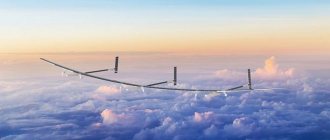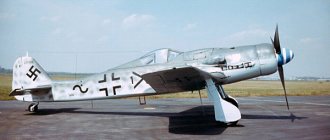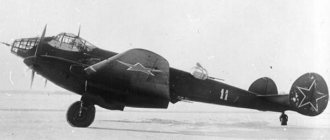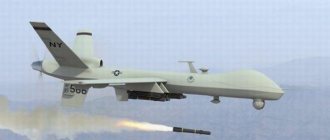“Good boots, we must take them,” foreign delegations think and willingly sign contracts for the supply of new aircraft.
Photo: Vladimir VELENGURIN
Already on the first day, when only official delegations were allowed into the air show, more than 7 thousand people visited the airfield. On business days, the streams passing through the airfield checkpoint turned into rivers. From today, when the doors are open to anyone, they threaten to become seething streams. A KP correspondent visited the MAKS 2021 air show, so thanks to our scheme and advice you can save time and, possibly, money.
NEW FIGHTER
Of course, the main sensation of the air show was the light tactical fighter Checkmate (“Checkmate”) presented on the first day. This is the younger brother of our main military aircraft development - the Su-57, even its index will most likely be mirrored - Su-75.
The main sensation of the air show was the light tactical fighter Checkmate (“Checkmate”), also known as the Su-75.
Photo: Vladimir VELENGURIN
Checkmate is not even an airplane, but rather a platform, on its basis new fighters will be created. The developers promise that the car will surpass its main competitors - the American F-35, the French Rafale and the Swedish Gripen. True, our fighter is cheaper.
A special pavilion has been equipped for the presentation of Checkmate at MAKS.
MS-21-310 - PERSPECTIVE, PASSENGER, OUR
The MS-21 medium-range passenger aircraft, the main hope of our civil aviation industry, was already presented at MAKS two years ago.
This time it is also on the list of new products. And it’s not surprising - the car is constantly being modernized, replacing imported components with domestic ones. Last time it took off here with an American engine, and today the new modification MS-21-310 is pulled into the sky by our PD-14 - a new generation engine based on Russian technologies.
A pair of MC-21-310 aircraft in the airspace of the MAKS 2021 air show.
Photo: Vladimir VELENGURIN
Moreover, this aircraft will also be a novelty in two years: in 2023 it should take off with fully composite domestic wings. Their first batch has already been delivered to the aircraft plant in Irkutsk.
In general, the MS-21 can be called the flagship of import substitution: more than 80 percent of its components are produced in Russia.
Flight of the Berkut
Another very interesting machine created at the Sukhoi Design Bureau is the Su-47. It's a pity that it still remains at the prototype stage. This aircraft has a forward-swept wing, which provides the aircraft with unprecedented maneuverability and rate of climb. The Su-47 made extensive use of composite materials, and the control interface in the cockpit was significantly improved.
The Su-47 was also created as a prototype of a fifth-generation aircraft. But it does not yet live up to the requirements put forward for such machines. The Berkut cannot fly at supersonic speeds without afterburner. In the future, they plan to equip the aircraft with a new engine with variable thrust vectoring, which would allow the Su-47 to overcome the supersonic barrier without afterburner.
The Berkut made its first flight in 1997; only one such aircraft was built. It is currently being used as a test site.
Here are the characteristics of the Su-47 Berkut aircraft.
| Wingspan, m | 16.70 |
| Aircraft length, m | 22.60 |
| Aircraft height, m | 6.40 |
| Wing area, m2 | 56.00 |
| Weight, kg | |
| normal takeoff | 25670 |
| maximum takeoff | 34000 |
| engine's type | 2 TRDDF D-30F6 |
| Maximum speed, km/h | |
| near the ground | 1400 (M=1.12) |
| on high | 2200 (M=2.1) |
| Practical range, km | 3300 |
| Practical ceiling, m | 18000 |
EVEN ASPHALT, EVEN PRIMER
More premieres at MAKS 2021 are the light military transport aircraft Il-112V and its civilian brother Il-114-300. These are new generation vehicles, ideal for regional transportation. They can take off and land on small airfields with concrete, asphalt and even dirt surfaces. Both military and civilian vehicles are powered by the Russian TV7-117ST engine.
Passenger aircraft Il-114-300 in the sky of the International Aviation and Space Salon MAKS-2021 in Zhukovsky. Photo: Sergey Karpukhin/TASS
True, the army version will not be shown at MAKS, but an inquisitive viewer can thoroughly enjoy the civilian modification - the Il-114. This airliner can carry up to 68 passengers, its speed is 500 km/h, and its flight range is 1900 km.
Su-35
Another newest aircraft recently adopted by the Russian Air Force is the Su-35. In 2014, 12 such aircraft arrived at the Aerospace Forces air regiments; in total, by the end of 2022, 48 Su-35s will arrive in the Air Force. This aircraft, developed by the Sukhoi Design Bureau, belongs to the 4++ generation and has technical and combat characteristics almost at the level of a fifth-generation aircraft.
It differs from the PAK-FA only in the absence of stealth technologies and an active phased array antenna (AFAR). The aircraft is equipped with a new information and control system, phased array radar, and new engines with controlled thrust vectoring, which can reach supersonic speed without the use of afterburner. The airframe of the aircraft has also been strengthened.
With the adoption of this aircraft, Russian military pilots can fight back against the latest generation of aircraft.
Main characteristics of the Su-35 aircraft:
| Wing size, m | 14.70 |
| Aircraft length, m | 22.18 |
| Aircraft height, m | 6.35 |
| Wing area, m2 | 62.00 |
| Weight | |
| empty plane | 18400 |
| normal takeoff | 25700 |
| maximum takeoff | 34000 |
| engine's type | 2 AL-31FM turbofan engines. |
| Maximum thrust, kgf | 2 x 12800 |
| Maximum speed, km/h: | |
| near the ground | 1400 |
| at high altitude | 2440 |
| Practical ceiling, m | 18000 |
| Practical range, km: |
ON JET TRACTION AND PISTONS
The highlight of the air show for any viewer is, of course, the flight program. Planes in the sky will delight visitors and residents of the surrounding areas every day. The legendary “Russian Knights” are the only team in the world that performs group aerobatics on Su-35S and Su-30SM heavy fighters. There will be Swifts on the MiG-29, Falcons of Russia on the Su-27, and Berkuts on the Mi-28N and Ka-52 helicopters.
And another surprise for fans of small aviation - the “First Flight” aerobatic team on piston aircraft. It consists of athletes who are prize-winners of Russian and world aerobatics championships. They perform sports and artistic figures on six Yak-52 and Yak-54 aircraft.
Aerobatic team "First flight" in the air. Photo: vk.com/firstflight
There will also be singles - Su-57, MS-21, Il-114-300, MiG-35 and many others. The flight program schedule is compiled separately for each day; before your trip you can view it on the official website of the air show (aviasalon.com).
The current state of the aviation industry - the Soviet reserve is almost exhausted
In February 2006, a decree was signed on the creation of the United Aircraft Corporation (UAC). 15 years after the creation of the UAC, it became clear that plans to capture the world market were too optimistic. There is a return to the idea: as in Soviet times, the aircraft produced will fly primarily in the “home” sky and be operated by Russian carriers. The new concept will make it possible to put the medium-range MS-21 on the wing and breathe new life into the short-haul Sukhoi Superjet 100, and then begin production of the Il-114-300 and Il-96-400M. Don’t forget about the Russian-Chinese long-range CR929.
At the moment, there are two different views on the UAC. Marketers believe that the development of a corporation does not make sense. The maintenance of factories whose products are not in demand in the context of international competition places a heavy burden on the budget, which annually covers their losses. Government officials say that the century-old history of national aeronautics is part of the cultural heritage and cannot be placed on the sidelines of history. It is important to maintain competence in the aircraft industry and prevent Russia from disappearing from the top league of countries with its own access to the skies.
UAC's initial strategy is to occupy 12-15% of the global market by 2025. It would be difficult to compete with Airbus and Boeing, which produce 600-800 aircraft each year, so the emphasis was on niche products. Did you manage to achieve success?
The only Russian aircraft that was sold abroad was and remains the Sukhoi Superjet 100, which entered service in 2011. It was supposed to occupy the relatively empty niche of regional aircraft, but while it was being prepared for introduction, several competitors appeared - Bombardier C Series, Embraer E-Jet in different configurations. Due to its pricing policy, Embraer's position has become very strong and promoting the Superjet in foreign markets is a problem. Initially it was planned to sell 70 pieces per year, although the entire global demand in this segment is 100 pieces. As a result, the Superjet's sales results are perceived as a failure. Since 2022, there have been unsuccessful attempts to sell to Thailand, Slovenia, Peru, Iran, and Zambia.
It would be difficult to compete with Airbus and Boeing, which produce 600-800 aircraft each year, so the emphasis was on niche products. Photo: ato.ru
The coronavirus epidemic has also made its own adjustments (both negative and positive). In particular, in 2022, an agreement was reached to sell 40 aircraft to the Norwegian low-cost airline Norwegian Air Shuttle. In the fall of 2022, the deal was suspended. In 2022, the only European operator, the Irish company CityJet, abandoned Superjets. In the rest of the world, less than ten aircraft fly in Mexico for the low-cost airline InterJet, in the Thai Air Force and in the government agencies of Kazakhstan.
UAC claims that the pandemic did not affect the pace of production, but it had to wait a bit with marketing actions. For reference: in 2016, 19 pieces were produced, in 2017 - 33 pieces, in 2018 - 24 pieces, in 2019 - 18 pieces, in 2020 - 11 pieces.
There are also positive aspects of the pandemic - new prospects are opening up for the Superjet, since many flights on which the large Airbus and Boeing flew are now underloaded and it is more profitable to fly a 100-seat aircraft with a full load. A good example is our Russian one, whose results in 2022 exceeded those in 2022.
Another reason for the lack of demand for our aircraft in general is the lack of an after-sales service system. Due to the banal lack of spare parts supplied on time, so-called “aviation cannibalism” is flourishing, when carriers are forced to keep some aircraft on the ground in order to dismantle them for spare parts to maintain the rest in the sky. The plane must constantly fly, this is what the aviation economy is built on. You can understand that, of course, it is expensive for them to maintain service centers around the world, like Airbus and Boeing, which can afford it due to their size. Airlines will always prefer to purchase equipment from a trusted manufacturer.
We must pay tribute to the UAC, a lot has already been done: warehouses for long-cycle spare parts have been created, allowing them to be supplied 24/7/365, a structural repair shop has been introduced, and a service center has been opened in the Far East. In the future, these centers will also be used by new models of Russian aircraft, such as the MC-21.
Another reason for the lack of demand for our aircraft in general is the lack of an after-sales service system. Photo: rostec.ru
LET'S FLY ON ELECTRICITY AND HYDROGEN
New to MAKS 2021 will be a flying laboratory with a hybrid power plant.
What kind of animal is this?
Oh, this is a real look into the future, because, according to most experts, the future of aviation lies in the creation of hybrid or all-electric engines. Why not? Electric-powered drones can already stay in the air for hours. Now scientists are working to ensure that manned electric and hybrid aircraft can lift impressive cargo into the air. A flying laboratory with a superconducting electric aircraft engine helps them with this.
As the designers say, the next stage of development should be hydrogen fuel. So in the future, this laboratory will receive a cryogenic hydrogen storage system and a hydrogen engine.
"Mig" fifth generation
Sergei Korotkov, general director of RSK MiG, told reporters that specialists from the design bureau are working on a fifth-generation fighter. The new vehicle will most likely be based on the Mig-35 (another Russian 4++ generation vehicle). According to the developers, the new Mig will be very different from the PAK FA and will perform completely different functions.
MAL DA DAL
Small aviation traditionally attracts a lot of spectators at MAKS. And this year there is especially something to see.
For example, the Partizan aircraft project, which is represented by the Foundation for Advanced Research. It is capable of rising into the air from a platform measuring only 50 by 50 meters.
The name was born from its ability to deliver cargo to a small, almost unequipped site - oh, how useful such an aircraft would have been during the Great Patriotic War! The flight range of the Partizan is about 1000 kilometers at a speed of 250 kilometers per hour. The first takeoff is scheduled for 2022.
"Baikal" is a replacement for outdated maize trucks.
The light multipurpose aircraft LMS-901 “Baikal” should also make its first flight this year. This machine should replace the veteran An-2 and thereby revive Russian small aviation. The Baikal is smaller in size than a maize truck, has a higher speed, and can fly longer without refueling. All this will help him bring hard-to-reach regions closer.
FLYING SUBMARINE
The GY-500 unmanned gyroplane, a sample of which was presented at MAKS by the Scientific and Engineering Company (NIK), is somewhat reminiscent of a flying submarine. Probably because this device has a control room, although without a periscope, like submarines. True, it does not contain pilots, but equipment that can replace them. An intelligent control system can transport this vehicle from point A to point B automatically. The developers promise that it will be able to transport up to 200 kg of cargo.
The GY-500 will be displayed in a static parking lot in the “Small Aviation at MAKS-2021” section. Photo: aviasalon.com
ATTENTION!
PCR test - 48 hours
The pandemic has made adjustments to the rules for visiting the air show. Any spectator must have an identity card and a document confirming the absence of coronavirus infection. That is, either a PCR test or a QR code. Yes, yes, they work too.
But please note that if you are traveling with PCR, it should be done no more than two days before visiting Zhukovsky. Not 72 hours, as we had gotten used to, but 48 (!) - this rule was introduced by the authorities of the Moscow region.
However, the organizers have agreed with some laboratories on special conditions and a special price if you come to take tests with a ticket. Their full list is on the organizers' website.
We called one of these laboratories. Indeed, guests of the air show have a 20 percent discount. But the results of a regular test will be ready in two days, that is, it is almost impossible to comply with the 48-hour rule. However, you can take a rapid test at the laboratory in Zhukovsky. It is more expensive, but a discount is also provided. The results will be ready in 5 hours.
— So you have to arrive at 10 am, take the test and wait until about 3 pm, and then go to MAX? - we asked. Even on the phone, you could feel the girl on the other end throwing up her hands.
But with a QR code confirming your vaccination, you are king. Show me at the checkpoint, and go wherever you want.
Important!
Visitors under 18 years of age do not need to take any tests. This was stated by Deputy General Director Vladimir Sovetkin.
MAX plan.
Photo: Dmitry POLUKHIN











